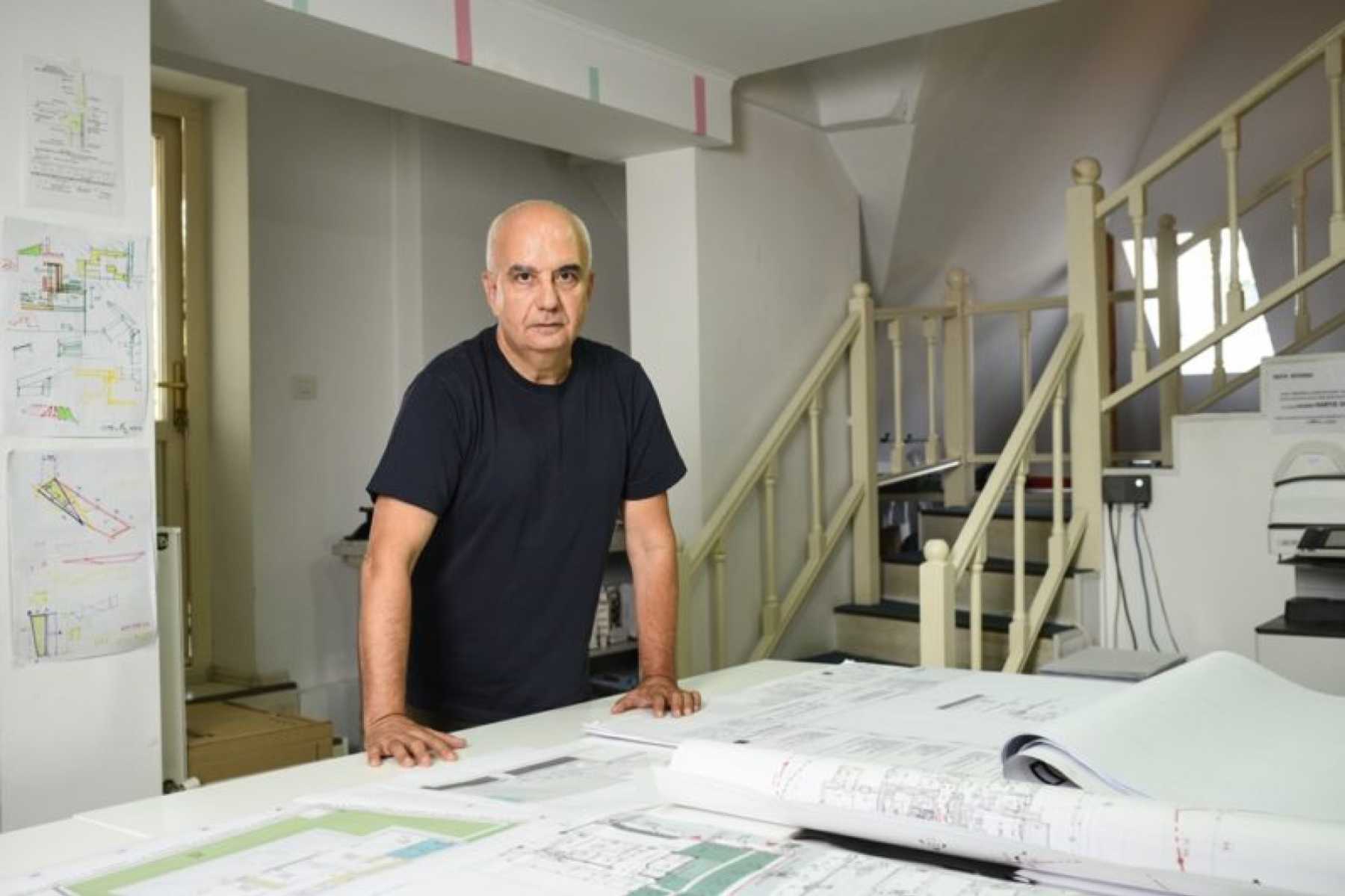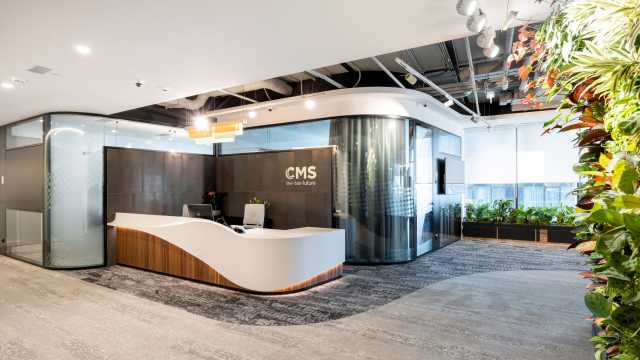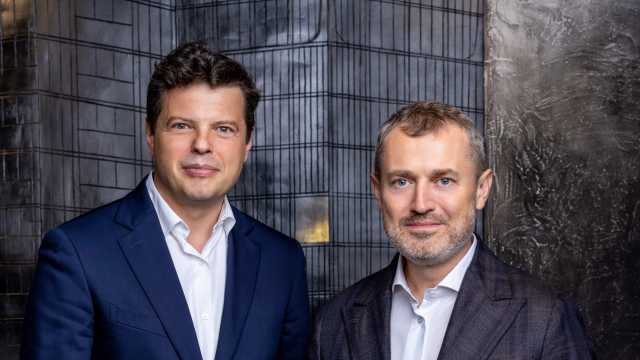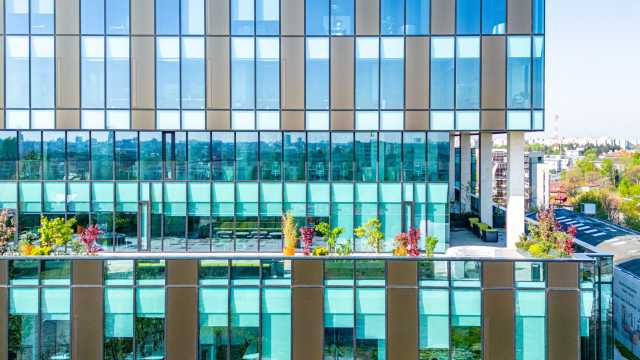He studied architecture and filmology in New York, where he founded the X Architecture office, which has produced a number of large projects in the US, Asia and later in Romania. Architect Marius Călin has now plans for expansion in Romania.
How does architecture fit with cinema and how did it help you in the current profession?
Enormously. The reason why I decided not to pursue studies in the direction of architecture was a certain discontent directed towards the theoretical status of architecture. I realized that I was drawing, doing a world - thinking spaces, but I did not understand very well the thinking process that leads to the formation, the appearance of architecture. And then, one of the options was this unusual faculty of studying the film. At the same time, as a professor of architecture, I was faced with several educational issues. I was studying the architect's education with effects in practice, being stimulated at the same time by those who directly or indirectly participated in my training, that is, people I had seen in magazines, whose works I had been studying, or people I even came to work with. This was the main reason, and the effects were manifested, precisely because thinking is the one that sets architecture. Because if a traditional model of architecture would a mimetic derivative, a stylistic one, or a one belonging to a certain period, architecture has always a similar theoretical construction not necessarily only with the film, but with the installation in art or the musical composition.
In 1997, you set up your own office in the US. How did the idea behind it arise?
First, I did it because I did not want to practice the bottom-up architecture. What do I mean by that? The opportunities I have had from my work in New York have been that of participant involved in large projects. What I did not understand at that time and did not understand for a few years is that the big project involves a systemic approach, where the creative emotion plays a role but is not the only determining force. That is, the organization of the project, its complexity must be manifested through an understanding of these countless components. I saw them partly also in daily practice or on the street, for example the structure, the facade. And then, if the traditional model of an architectural firm is from small works to slightly larger works and so, maybe one day you can do large works.
I have worked on major projects from the outset and the development or emergence of this organization has been primarily stimulated by the possibility of projects in Asia. Then I decided to go this way.
Seven years later you decided to expand your office in Romania. What attracted you to the local market and how did you get in touch with the market here?
First I thought it would be like in Asia, but I realized in a relatively short time that it was not the time yet. We are definitely approaching, a decade later, this effusion through architecture in society. The project I started - Băneasa Residential - involved development on a large surface and the transformation of the city. At that time, it was not exactly understood in that sense once because of the location, due to the relationship with this program that we call the housing program, the apartment buildings. But it was part of a large urban plan, being one of the components to be related to the others. At that time, there were four major components, namely offices, commercial areas, a leisure area and the residential component.
You are involved in developments with One United Properties. What attracted you to these projects and what are the plans of the investors?
They have a special feature, not only in terms of urbanism, but primarily in architectural practice. There are projects targeting innovative developments in the city, but they are not self-reflexive, narcissistic. There are projects where space, both the exterior and the interior, enter into another relationship both with the city and with those who live there. Re-imagine the art of living. They are mixed developments, meaning they also have commercial or office areas, as well as many apartments. We believe architecture is a continuous discovery. The apartment should not be just a location, although in real estate developments the location repeated three times is a frequent mantra. The spatial quality of the apartment building, the way the transparent elements, the rooms, the balconies are associated with the other spaces, actually play the central role in the development of these projects. Orientation towards the urban environment is not just a gesture by which the developer reverts to the city. Transform the city by understanding that architecture, apart from discovery, is a cultural activity. What we do are spaces of cultural experience. The building has its depth, its mystery, it has functionality, it is set in motion, activated, made real exactly by its occupants, and by the way it relates to the other more messy, perhaps more uncomfortable but real urban aspects.
What other plans do you have with the architecture office?
Several other buildings with all their administrative aspects and problems. I think that, 30 years after a historic change, we are still confused about this extraordinary opportunity to discover ourselves. We would like somehow to be discovered, to have already been discovered and I do not want to quote the Romanian forebears with "veni, vidi, vici", because we would have already been defeated, and certainly not only in Romania, many of the companies are companies defeated by their own hesitation. I have discovered as a guest professor at "Ion Mincu" University of Architecture, but also in practice, a series of dissociations, of difficulties related to education. In fact, the education of the architect leads to the possibility of to build I think at the present time we are at the beginning of this rebirth - given that there are a number of people who practice a very good architecture in Romania, being able to understand this mystery and discovery that each building is causing.
Let us not confuse any more ad infinitum the construction of space with a direct manifestation or equivalence of what a highly disputed person has called at one point the primitive accumulation of capital. That is, space in society, although by its nature has countless problems, it cannot be a repetition based on historical patterns, which in their turn, certainly, at that time, as we see on the street, have had a degree of innovation or have been influenced by those innovations.
There is a need for an understanding of the technology, because if we will be able to print buildings in 3D, there is still a very difficult aspect: how do we think of those buildings, how do we think that life. We live in a world that has been thought over the last hundred and some years, and it is in this way we see and we want this contribution of architecture, not as fireworks, as a form of exuberance of a moment, but as an opening to a world which is in a continuous transformation, an unexpected world, but the world of these spaces that architecture opens and offers.
Published on Revista Biz on Octomber 18, 2017.



